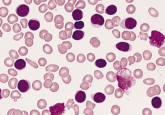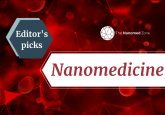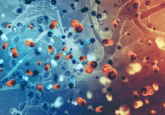AACR20: interview with Neeraj Chauhan on the delivery of ormeloxifene for cervical cancer

Neeraj Chauhan presented her work ‘Smartly ReDO ormeloxifene for cervical cancer growth inhibition’ at the American Association for Cancer Research Virtual Annual Meeting part II in June. Here, Chauhan gives an overview of this work and also answers questions on the use of nanotechnology for drug delivery in diseases such as cancer.

Biography: I am an Assistant Research Scientist in the Department of Immunology and Microbiology, School of Medicine at the University of Texas Rio Grande Valley (UTRGV; McAllen, TX, USA). I have over nine years of extensive experience in oncology, drug delivery, nanotechnology and pharmaceutics research. I received my Ph.D. in 2017 from the University of Tennessee Health Science Center (UTHSC; Memphis, TN, USA), majoring in pharmaceutical sciences.
Can you give a brief background of your career to date?
After graduating in 2017, I joined UTHSC as a research fellow and developed polymeric and magnetic nanoformulations of paclitaxel and VERU-III (anti-cancer drugs) for pancreatic and cervical cancer management. Later, in 2019, I moved to McAllen (TX, USA) and was appointed as an Assistant Research Scientist at UTRGV for developing novel nanotherapeutics for variety of cancers including cervical, ovarian, breast, pancreatic, liver and prostate cancers.
Could you please give an overview of your work ‘Smartly ReDO ormeloxifene for cervical cancer growth inhibition’ presented at AACR Virtual Annual Meeting 2020?
Cervical cancer is still one of the deadliest cancers in women, which requires newer therapeutic means for its overall improved outcomes. When it comes to the new therapies, it can take decades to get a new drug approved and bring it to the market, and this whole process of drug development costs tremendous amount of money as well. We have opted for a faster and more cost-effective way to develop a newer therapy for cervical cancer using an old drug, which has already been approved for use in humans. This process is called drug repurposing, where we use an old drug for a new indication. For this work, we have ReDO (Repurposing Drugs in Oncology) ormeloxifene, which originally is used for contraception purposes in humans.
This project reuses ormeloxifene in an even smarter way by developing its polymeric nanoformulation. These novel nanoparticulates specifically targeted the cervical cancer cells and tumors, therefore, showed an improved anti-cervical cancer therapeutic efficacy than the free drug in vitro and in vivo. Results from this study indicated that ormeloxifene can be repurposed for cervical cancer in a smarter way, demonstrating great potential for its clinical translation.
Can you explain why you chose to repurpose ormeloxifene (ORM), which is currently licensed as a human contraceptive drug, for cervical cancer treatment?
As I said earlier, for quicker drug development, reusing the already existing drugs is a more clinically relevant approach. In case of ormeloxifene, we already know its safety and efficacy profiles as it has already been in human use, for a different purpose, which makes it an easier and more feasible drug to work with. Not only this, some recent studies from our and other groups even demonstrated its strong anti-cancer activity against ovarian, breast, head and neck, pancreatic and prostate cancers. Ormeloxifene has even made it to a phase II breast cancer clinical trial. Together, this information implements a strong rational for exploring the capacity of this drug to become a potent anti-cervical cancer agent.
What were the main findings from your research?
Our data indicated the strong anti-cancerous effects of ormeloxifene in cervical cancer. We have tested this drug and its nanoformulation both in vitro and in vivo. Ormeloxifene effectively reduced cervical cancer growth and motility. The drug showed excellent anti-HPV properties as well. When we used the nanoparticles of this drug, results were even improved as superior internalization of drug through the nanoparticles was recorded. Moreover, ormeloxifene nanoparticles along with free drug exhibited superior anti-tumoral activity in a cervical cancer orthotopic mouse model by increasing the overall mice survival rate and decreasing the tumor size and volume.
What challenges are there in developing drugs for cancer therapeutics?
The primary challenge with cancer drug development is ‘cancer cells specific drug delivery’. The conventional free drug delivery is often associated with non-site specific or tumor specific effects/toxicity, poor solubility, poor bioavailability and quick clearance from the system, which remain the major concerns for developing cancer therapeutics.
How can nanotechnology be used to overcome these challenges?
Nanotechnology offers sustained release and site-specific delivery of drugs. Additionally, it improves the solubility and bioavailability of the given drugs. Nanoparticles possess the adequate nanometer size (100–300 nm), which facilitates them to be entrapped into the leaky vasculature of tumor cells, enabling the enhanced permeation and retention (EPR) effect. Due to this targeted drug delivery, nanoparticles show minimal to no non-specific toxicity, which makes nanotherapeutics a favorable medium for their quick clinical translation.
Any final comments?
I always say that cancer cells are very smart and the only way to tackle them is to play smarter. Exploring the drug candidates that can be repurposed and by generating and evaluating different types of nanoformulations, create a platform for efficient and faster drug development for cancer with more clinical relevance. Metformin (originally for diabetes) and Viagra (originally for hypertension) are the two widely known and successfully repurposed drugs for the new and different indications. Hence, working with already known/used drugs in a smarter way (in the form of nanoparticle formulations) guides us towards achieving the newer path to treat cancer.
The opinions expressed in this feature are those of the interviewee and do not necessarily reflect the views of The Nanomed Zone or Future Science Group.
For more AACR20 coverage from The Nanomed Zone, see here >>>





